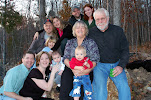Class Minutes Date: March 2, 2010
Taken by: Amanda Fischedick
Participants: Don Wagner, Amanda Fischedick, Lynnette Bruce, Kyle Hodgson, Rob Greer,
Nathan Reynolds, Aaron Day, Jon Willow, Matthew Ali, Ryan Reed, Stacy Furgal, Giselle
Guadalupe, Timothy Cumberbatch, Brittany Meeks, Jessica Zeller, Danielle Zeller, Maegan
Spindler, Alex Mottern, and Leanna Mulvihill.
Class Start: 9:31
Review of Minutes
Discussed the origin of the title “Don Dude”.
Reviewed comma usage and presence of “ing” words.
Minutes accepted as ratified.
Technical Process Description
Handed in technical process draft and reviewed several.
Reviewed guidelines:
· Overview
· Compare/Contrast
· Signal to reader
Class Examples
· Definition (is/are ______ that/which____)
· Label diagrams and figures, have them placed by text.
· Normally you would cite images and figures, but for our use here plagiarize.
· Provide descriptive heading for each part of your description.
· Begin with a concrete definition that uses specifics. Do not be general, or vague.
· Use technical terms; provide the reader with a list of the keywords you will be
using.
· Keep in mind the audience you are writing for.
· Keep the format of your document consistent.
Assignments
By Tuesday read the section of our online text on reports and think about a proposal
topic.
By Sunday night redo technical process description.
Class End: 10:45

